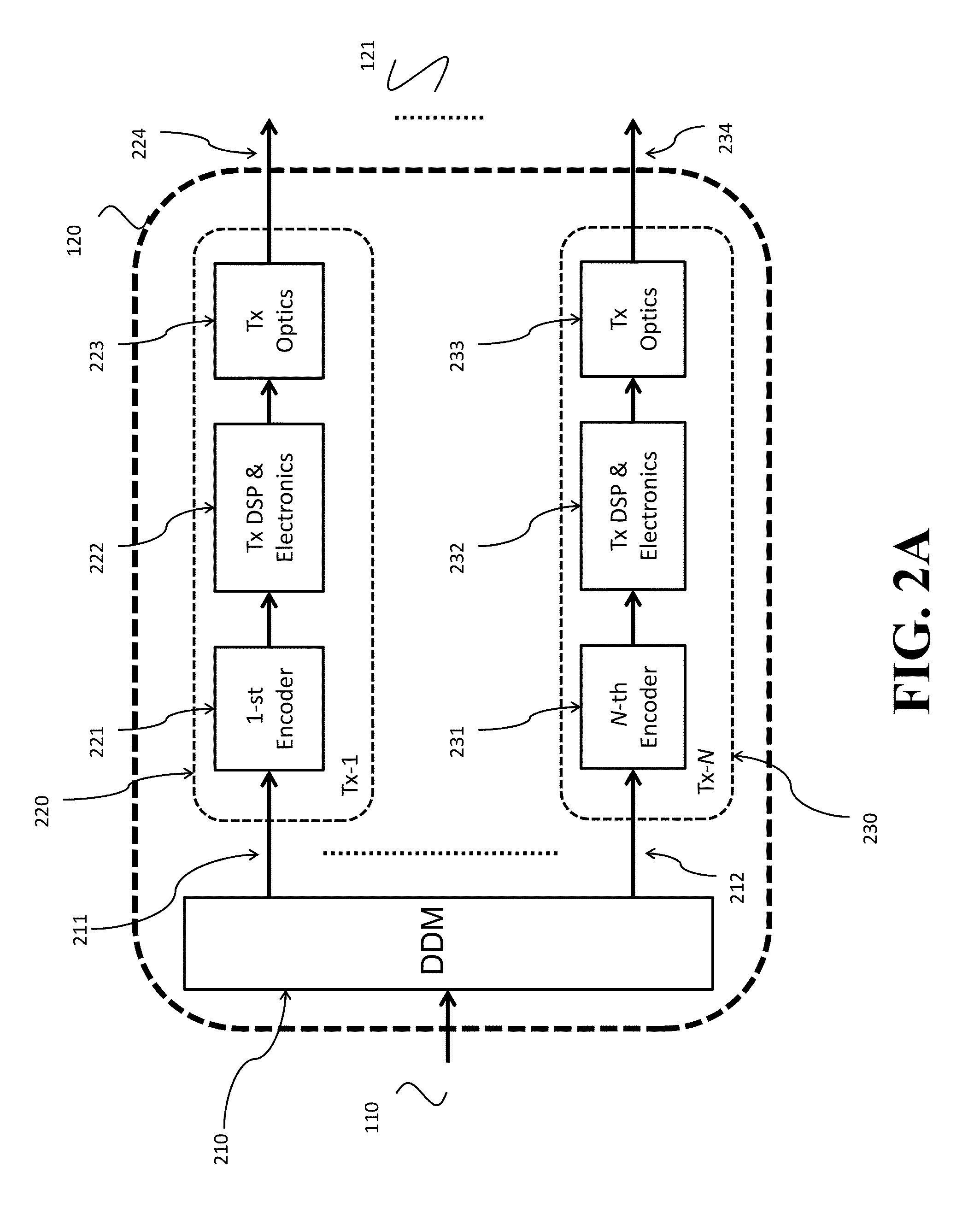Inter-Channel Interference Management for Optical Super-Channels
- Summary
- Abstract
- Description
- Claims
- Application Information
AI Technical Summary
Benefits of technology
Problems solved by technology
Method used
Image
Examples
Embodiment Construction
[0027]FIG. 1 shows a block diagram of a super-channel transmission system for transmitting data to a receiver over an optical fiber channel. A sender transmits digital data from data source 110 by a super-channel transmitter 120, which generates a set of data streams to be transmitted over a set of sub-channels of different wavelengths 121. The data streams are combined by an optical wavelength multiplexer (WM) 130, possibly with other independent wavelengths 131 to form an optical signal for transmitting over the optical fiber channel 140.
[0028]On the receiver side, the optical signal is first separated according to multiple wavelengths 151, 161 by an optical wavelength de-multiplexer (WDM) 150. Some of those wavelengths 151 are not related to a super-channel receiver 160. From the other related wavelengths 161, the super-channel receiver 160 recovers the transmitted data 110 to a data sink 170. Some embodiments of the invention use a control block 180 to optimize the super-channel...
PUM
 Login to View More
Login to View More Abstract
Description
Claims
Application Information
 Login to View More
Login to View More - R&D
- Intellectual Property
- Life Sciences
- Materials
- Tech Scout
- Unparalleled Data Quality
- Higher Quality Content
- 60% Fewer Hallucinations
Browse by: Latest US Patents, China's latest patents, Technical Efficacy Thesaurus, Application Domain, Technology Topic, Popular Technical Reports.
© 2025 PatSnap. All rights reserved.Legal|Privacy policy|Modern Slavery Act Transparency Statement|Sitemap|About US| Contact US: help@patsnap.com



